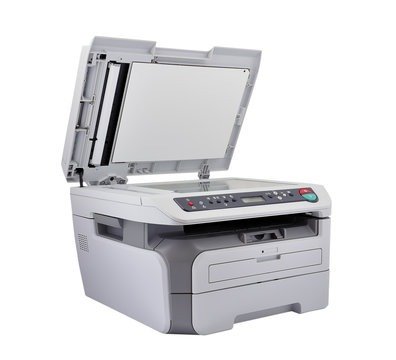For a first scan on a Mac computer , it is completely normal that you do not really know how to go about it. Lucky for you, the process is simple and we show you step by step how to successfully scan. Looking forward to finding out? Let's go !
Step 1 : Connect the scanner and computer

To get started, you need to connect your computer and scan it. This will be done in two phases: connections and configuration.
You should already know that with your Mac, there is no need to download specific connection software. “Image transfer” type software is integrated into it which allows you to perfectly control any type of scanner. The configuration is done in a few seconds.
- In the search bar, type “ image transfer ”. The software will appear and under a camera icon.
- Right-click on the icon and click on the “ Open Scanner ” button.
It's done, you have just connected your scanner to your Mac.
See also : Print over Wifi! How to connect your printer?
2nd step : Scanning the document
After connecting, you need to choose the scanning mode suitable for your device. Indeed, precision is essential for the rest because the method varies depending on the type of scanner you have.
With a flatbed scanner

In 3 sub-steps, you will be able to scan different images at the same time with a flatbed scanner.
Step 1: Put the documents to scan on the set
Here, you must place the document scanning side on the glass part of the scanner. They must remain still during the entire operation.
Step 2: Check Connectivity
Double-check that the computer and scanner are properly connected. Nothing prevents you from carrying out the connection process again in order to be reassured.
Step 3: Choose the flatbed option
You will see a box where the option to scan with an auto tray is available. If you have a flatbed scanner, simply uncheck the box before continuing.
With a scanner that has a power supply tray

This device offers you the advantage of being able to scan many pages in one go. Only one adjustment will be made and it will be applied to all pages. Arrange the documents to be scanned in order in the tray.
Step 1: Sort through your documents
However, only keep documents to be scanned with the same characteristics in the same group. Indeed, because of the unique setting, you cannot have colorless and color scans at the same time. So be careful when sorting so that you don't have to re-scan certain documents.
Step 2: Check the connection between the computer and the device to be scanned
This step occupies the same place and has the same importance, whatever the mode of digitization chosen.
Step 3: Choose the auto tray option
Here, you must keep the box for the option to scan with an auto tray checked. If it is empty, then check it to tell the computer the desired scanning mode.
You will like this article : Portable printer or Polaroid? What to choose !
Step 3 : Make the necessary adjustments

Regardless of which scanner you have, the process after scanning mode is the same. This step consists of providing all possible details to the expected digitized form.
- The type of image
local Type option . You must specify the nature of your document. If you want a white-black rendering, opt for “ text ”. For images with colors, the option is also present.
- The resolution
This is about the weight that the digital version of the document must have. Choose a value between 200 and 300 dpi.
- The size
For scans of A4 paper, deactivate this option to maintain a good size.
- The overview
Here you have the opportunity to turn an upside down document right side up.
- The location
Your computer allows you to choose a specific location for the digital version of your document.
- The name
Thanks to this option, you can assign a name to each document in order to find yourself quickly.
- The format
For handwritten documents, choose the “ PDF ” format and the “JPEG” format for photos.
- The correction
This last option offers you various possibilities for modifying the initial document.




